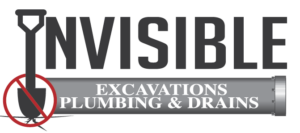Who doesn’t love discussing the topic of alternative waste management?From septic tanks to sewer systems, the manner in which you dispose of human waste and water from your toilets, showers, dishwashers, washing machines, and floor drains is sometimes a matter of choice and other times a matter of home location.
Regardless of which system you currently have, understanding how both waste management options function and the way in which they impact your home is must-know information for any homeowner.
Septic vs. Sewer Systems: Is One Better Than the Other?
If you’ve already been doing your research, are you still wondering which option is better for you?
Truth be told, both options have their pros and cons depending on the location of your home. The following are a few differences between the two options and examples of why some homeowners prefer one option over the other.
Septic Tanks
Septic systems are considered a bit more environmentally friendly since they don’t require chemicals to clean the water. Waste water is typically filtered through the ground, shedding bacteria through this natural filtration system. However, septic tanks must be pumped out every 3 to 5 years, and – at times – more often, depending on the size of the tank and the amount of waste water being produced within the home.
This expense can add up, but it is a necessity, and having it done professionally is vital to the longevity and proper upkeep of the septic system.
Sewer System
Sewer systems require less regular maintenance by the homeowner and are typically less sensitive to non-human waste that is commonly flushed down sewer pipes. Even when maintenance is required, a majority of the time, it is covered by your local municipality and can be dealt with by a simple phone call to your local public works department. However, sewer systems are not free, so homeowners will pay for their sewer service just like they pay for water and electricity.
The most important thing to understand when discussing septic tanks versus sewer systems is that if trouble arises with a septic tank, the homeowner is usually on their own to address the situation.
From overflow to simple malfunction, a septic tank on the fritz is the sole responsibility of the homeowner to deal with and correct.
Can You Switch from Septic to Sewer?
Making the switch from septic to sewer is definitely possible but must be approached properly in order to avoid unnecessary headaches. If you are thinking about switching from septic to sewer, the first thing to do is contact your local municipality to see if a sewer line runs close enough to your home/property to make the switch possible.
Once it is confirmed that it is possible, the next step is to obtain the necessary building permits to avoid any local violations and potential fines associated with unauthorized construction projects.
At his point, you need to contact a licensed plumbing and excavation expert to facilitate the installation of sewer piping that will connect your tank to the nearest sewer line.
Following these steps may seem difficult and overwhelming, but if you plan and approach the installation process appropriately, connecting your home to the public sewer system is a relatively simple procedure typically taking only a few days to complete.
Working with reliable plumbing and excavation professionals will ensure all the labor-intensive work is handled, including running the new line and taking care of the draining and disabling of your old septic tank.
Contact the Professionals at Invisible Excavations
How to Connect Sewer Line to City
As previously stated, the first order of business is to obtain all of the necessary permits to begin the job. This will include any tie-in fees that your municipality charges to connect to the existing sewer line, but a professional plumbing and excavation expert can help you identify what type of connecting pipe is needed and what initial costs are required. Here is a more in-depth breakdown of what’s required to connect to the city’s sewer line:
Once permits are obtained, it’s time to start digging the line.
Generally, your plumbing expert starts by digging down near the road in order to find the “stub” or short piece of capped pipe buried in the ground. This allows the new line to tie into the existing stub rather than trying to cut into the main sewer line.
When the capped pipe is found, an elevation check is done to ensure correct pitch of the sewer line, which tends to be two inches of fall per ten feet of pipe. Again, the plumbing and excavation professional you hire should know all of this in advance.
From there, a trench is dug from your home to the connecting pipe section. The pipe is then installed, starting at the road and connecting to your house. It is done this way to minimize the time you go without sewer and make the process a bit easier to manage.
Cleanouts are typically required every 90 feet of pipe and there are additional steps required, depending on where your home is located, such as placing stone around the pipe throughout the installation.
Invisible Excavations Takes the Guesswork Out of Connecting to City Sewer Lines
In addition to our expert sewer pipe repair services in Cleveland and Northeast Ohio areas, we can help homeowners proceed as quickly and cost effectively as possible when switching from a septic to sewer system.

